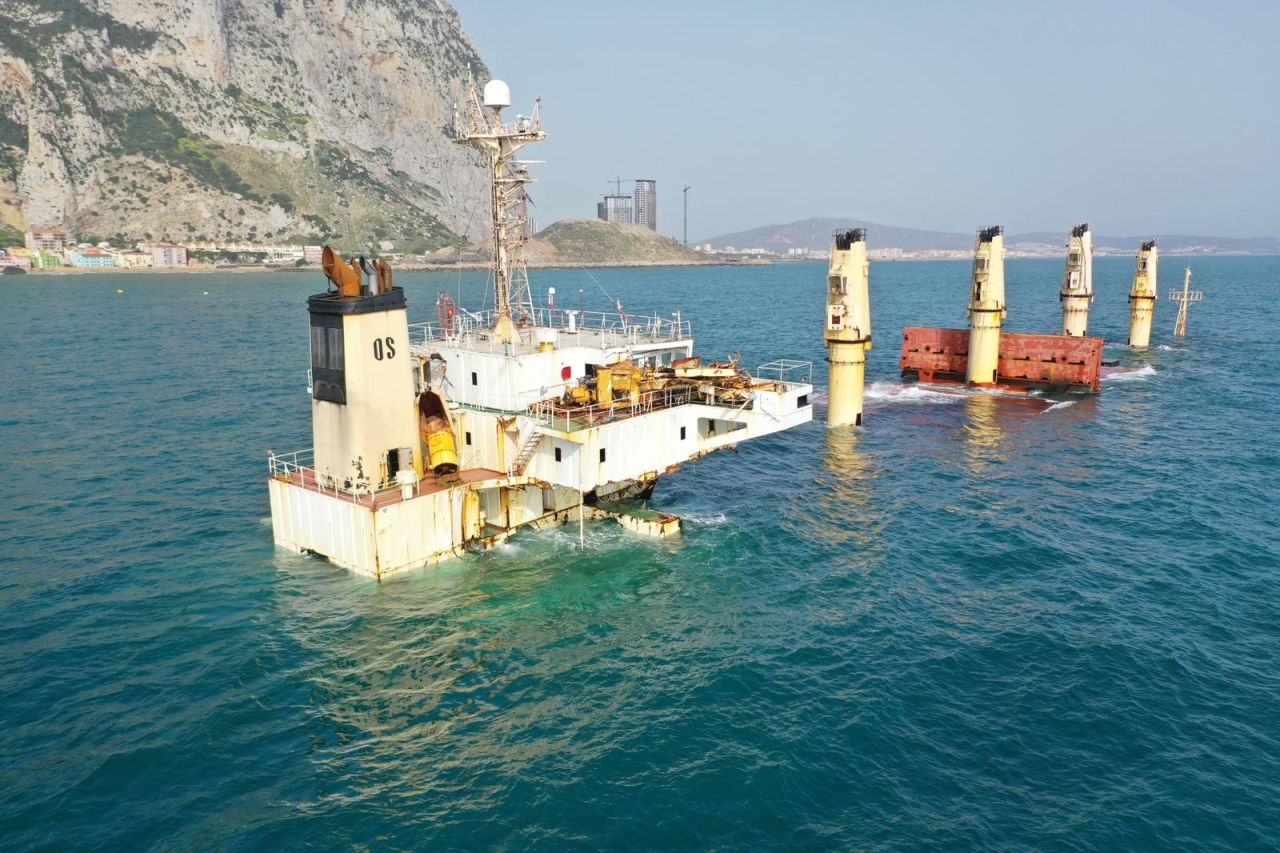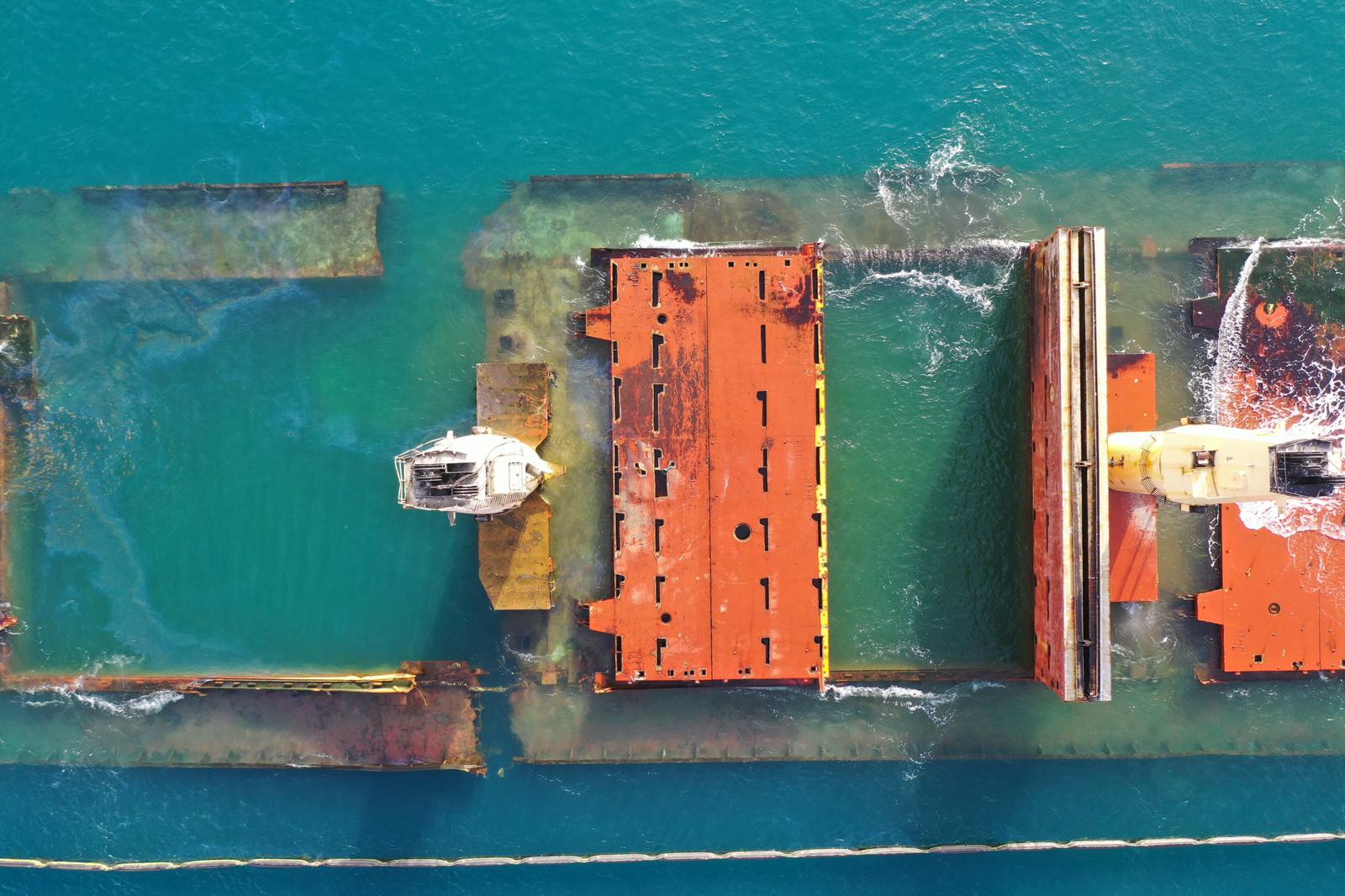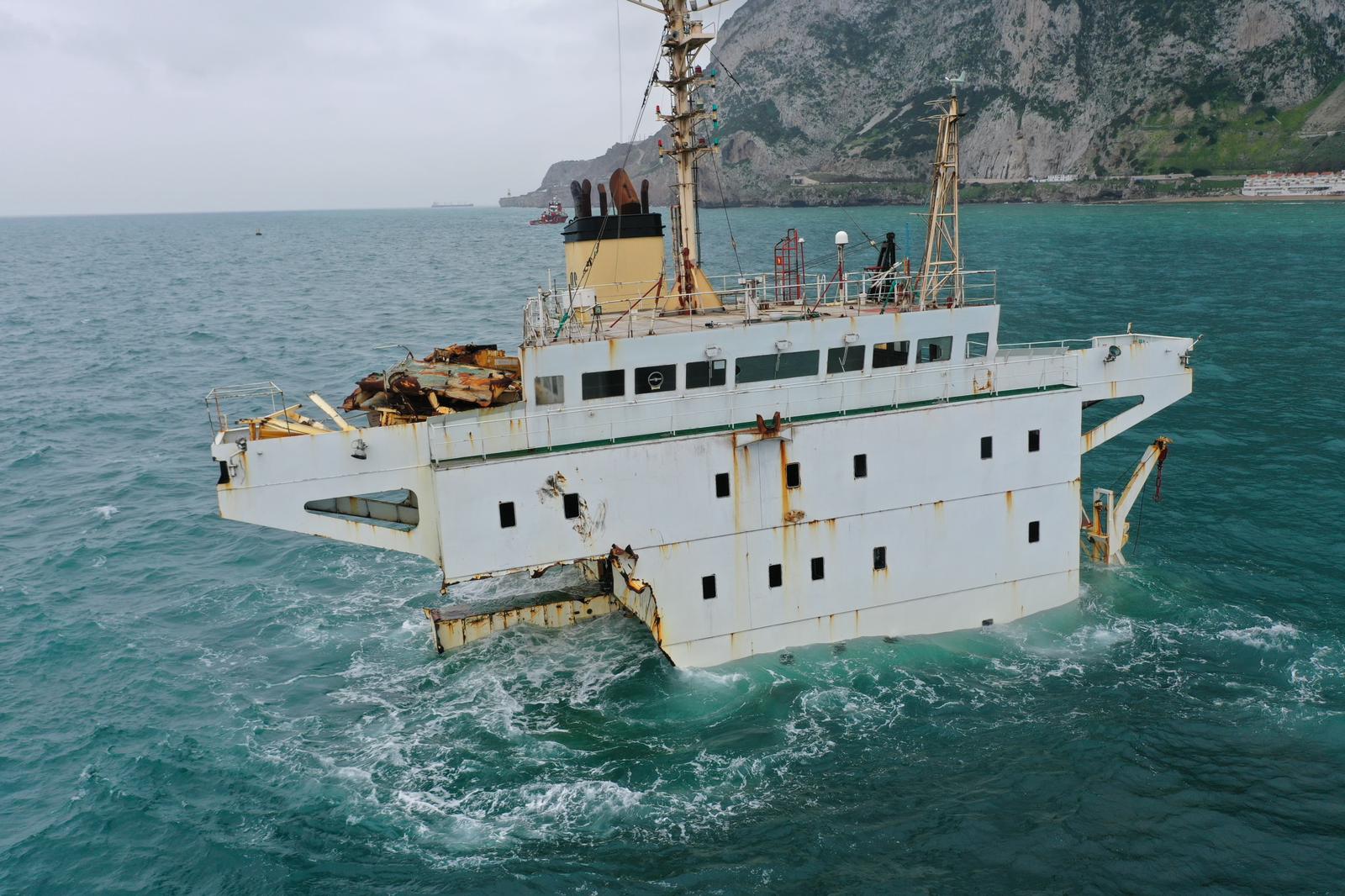OS 35 Update – Survey Report Details Storm Damage

The Captain of the Port has received a survey report detailing the damage sustained by the OS 35 wreck as a result of recent storms.
DAMAGE TO THE HULL
Damage to both the accommodation block and hull had been anticipated and prepared for with the stripping of the interior and unloading of the vessel prior to the onset of the bad weather. Whilst the wreck has sustained structural damage, most visibly to the starboard side of the accommodation block and hull, this is not considered to be extensive given the overall situation. The debris from this is contained within the site of the wreck.
The original crack in the hull has extended to the Port side, and the two parts of the ship are now only tenuously held together by the very bottom part of its structure, known as the bilge keel. The bow is now sitting a further 4 metres into the sandy sea bed, whilst the stern is now sitting a further 2 metres into the sea bed. This is a result of shifting sands with heavy swells.
However, the OS 35 has not moved from its original site, demonstrating the effectiveness of the strategy to stabilise the vessel with a controlled sinking. This provided the wreck with the maximum possible stability to weather the expected winter storms.
FUEL TANK 1
The damage to the hull has enabled divers to conduct visual inspections of fuel tank 1. As a result divers have been able to confirm that all four tanks that make up ‘Tank 1’ have suffered damage. There is still some light sheening, which is being contained successfully within the boom.
The other set of fuel tanks, No 2 Fuel Tanks, remain undamaged and are situated in the aft area of the wreck, which has not suffered any damage. The dive survey has confirmed with certainty that these tanks are intact and are not at risk of failing and causing a sudden release of residues.
These tanks had been emptied in earlier stages of the operation and although it is likely that some residues remain and future light sheening can never be entirely ruled out, the risk of future escapes of oil is now dramatically reduced.
WRECK REMOVAL PLANS
The removal of the vessel’s cargo continues to be the first priority at this stage of the operation, with over 11,000 tonnes (representing around 1/3 of the total cargo) already removed. Between 600 and 900 tonnes of cargo are being removed daily. The damage caused by the storms has had no detrimental impact on the cargo removal operations or their timelines.
The work to remove the OS 35 and its cargo continues to progress well, and the downtime dictated by the winter storms was built in to the planned project timeline. The current condition of the wreck and the damage to its hull and structure means that some of the plans for its final removal may need to be tweaked, although it is unclear as to how this may affect the projected timelines, if at all.
ENVIRONMENTAL IMPACT
As previously reported, small amounts of residual oil were found on Eastern Beach, Catalan Bay and the rocks at Sandy Bay in the aftermath of the storms. These had been anticipated and quickly dealt with by the P&I Contractors, monitored by the Gibraltar Port Authority and Department for Environment.
Due to the stripping of the accommodation’s interior in anticipation of the storms, no secondary contamination or debris was detected.
STAKEHOLDER BRIEFINGS
The Captain of the Port maintains constant communication with his counterparts in Spain, and has today briefed Spanish authorities with this latest information. The Captain of the Port has also briefed other stakeholders, including the residents of Catalan Bay.
The Captain of the Port, John Ghio, said: ‘The damage to the vessel’s hull and accommodation block, whilst not ideal, was anticipated and prepared for with the removal of as much oil as possible and the complete stripping of the accommodation. These measures, together with the decision to sink the wreck in a controlled manner and thereby secure it in place, gave the vessel the maximum possible stability to withstand the winter storms as far as possible. Overall, I’m pleased that works continue to progress well, with cargo removal remaining as the current priority.’


Latest News
- Giovanni Origo Budget Speech 2025 - GSD Shadow Minster for Youth, Tourism, the Environment and Transport
- Budget 2025 Speech by Minister for Industrial Relations, Civil Contingencies and Sport, Leslie Bruzon
- HM Customs Gibraltar Launches ASYCUDA Version 4.4 to Modernise Border Management
- Budget 2025 Speech by Minister for Equality, Employment, Culture and Tourism Christian Santos
- Declaration Of Enlistment By Royal Gibraltar Police Recruits
- Local Actors Travel To UK Drama Festival
- Bridge House Charitable Trust Welcomes Donations
- GSD Says Principal Auditor Report 2018/19 Should Now Emerge
- The Budget 2025 – Minister Gemma Arias-Vasquez's Address
- Ministry Of Equality Marks Successful End Of The Sixth Cycle Of The Women’s Mentorship Programme



